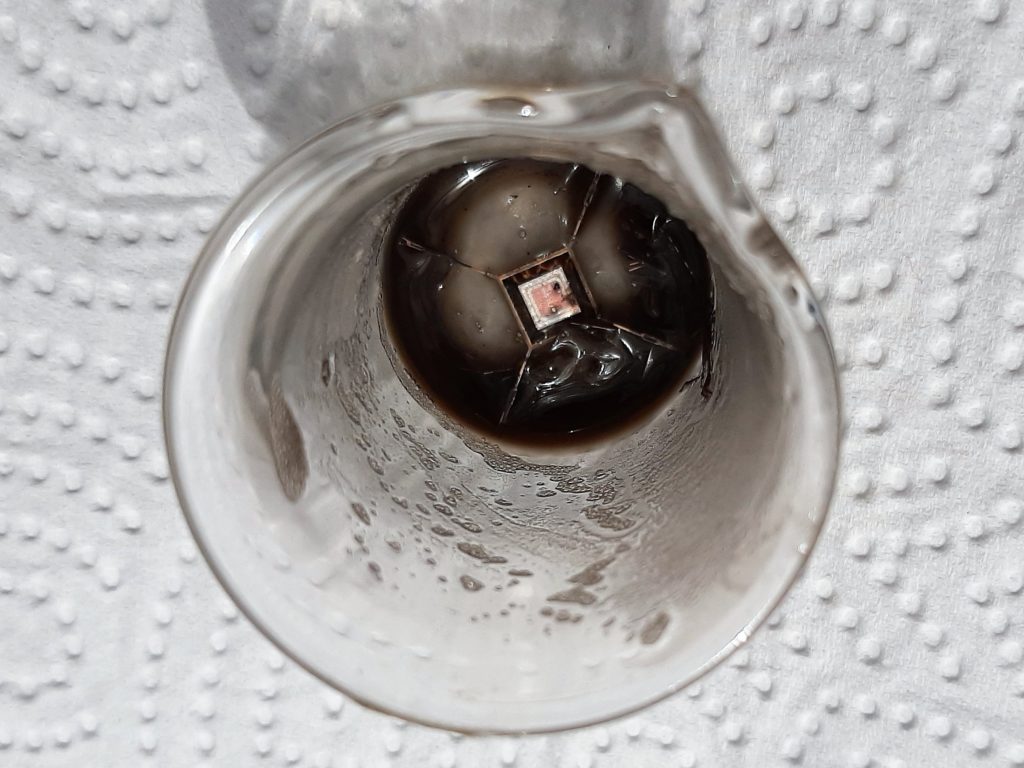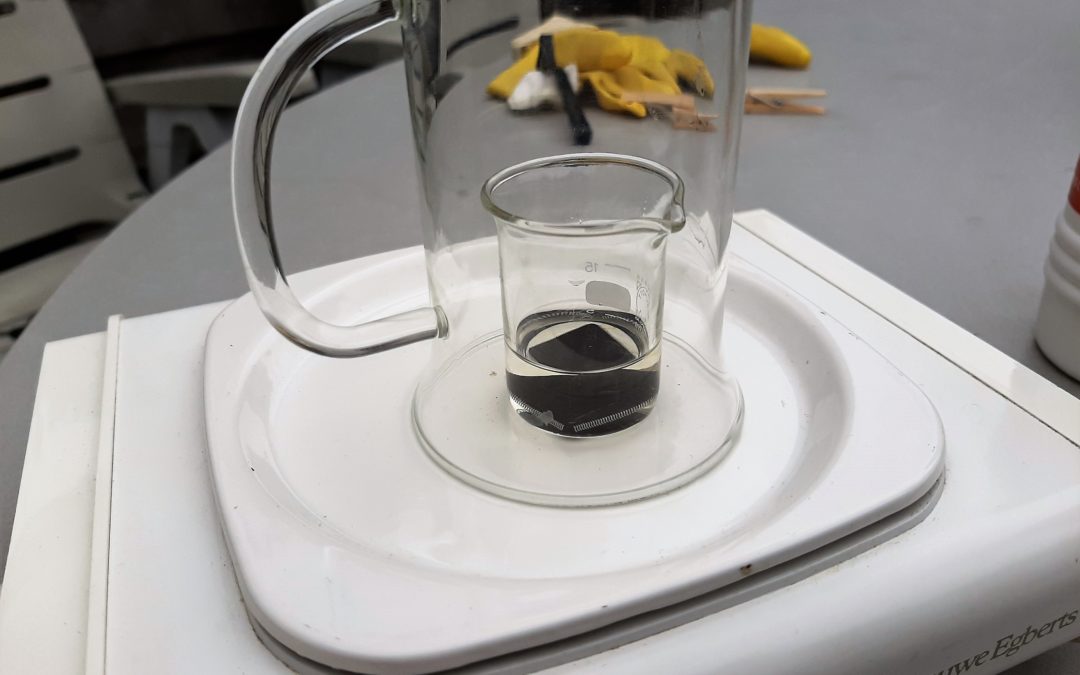It has been a while before I posted something useful. On my search for obscure chips, I came around another interesting Chinese chip (which I don’t reveal yet). The chip was advertised as a cheap drop-in replacement for a American IC so I suspected it would be a clone. I wanted to look inside the chip to check if that is true.
For my post about the SWM050 I used the decap service from DirtyPCBs.com. The process was quite straightforward and the result was not hires pictures but there was enough to see . Browsing the internet it revealed the decapping process is quite easy; you need lots of personal protection gear, some acid, glasswork and a heat source.
First a note of precaution: boiling (or warm) acids are dangerous and eat easily through carbon based material like your clothing and skin. Always wear safety goggles, (acid resistive) gloves, long sleeves and easily to remove clothes. Also observe the recommendations by the manufacturers safety data sheets (SDS). The SDS for sulphuric acid is here and others can be found through google. Please read them carefully and obey them!
I choose to use sulphuric acid as the acid as it seems to do the job great, but is not as fumy and aggressive as nitric acid. I had a low wattage (55W) boiling plate and this combination gave almost no fumes. To minimize the fumes even more I had the beaker cover by another glass and performed the decapping outside.
I didn’t rush the procedure and the whole decapping process toke about one hour and this is the reward:

It doesn’t have any markings of the chip it is suppose to replace, so at least it is a own design (can still be a clone). I haven’t got a microscope yet to verify that or look better at the die. If you have a recommendations for a microscope, please share them in the comments.



Impressive! I didn’t realize it was so straight forward.
I think I know what the chip might be 😛
Great post!
What do you use to cover your beaker of sulfuric acid? I’d like to purchase one too as my process is currently giving off an obnoxious number of fumes. I’m thinking your low wattage approach is much smarter than my high wattage one 🙂
I used a thea-glass from the trift store 🙂 I already had those small 25ml beakers. I’ve seen others use petri dishes to cover the beaker.
I think the fumes were modest because the temperature was about 80-90 degrees, while some YouTubers ramp it up to 150 degrees! The whole etching took about an hour, compared to 5-10 mins on YouTube. Still use glasses and gloves during the process!
Interesting. I’ll have to try that out. I have watch glasses which I’ve used, but I’m not sure they could handle temps I was doing it at (my temps were 200c+ with the acid). 80-90 seems way safer. Thanks for the tips!
Do you have a scanner at home? You can scan the chip at the highest non-interpolated dpi-setting. This will give you a magnified image when you open it on your screen
Not a particular good one, but will try it. Thanks.
If you have a scanner you can disassemble it, pick out the lens and use your cellphone as a microscope.
Did some decapping too a while ago, like you mention, it’s not that hard at all!
https://jelmertiete.com/2015/06/30/Difference-between-CC2630-and-CC2650/
A Chinese drop-in for an American chip? I have recently noticed some new brands of *32F* chips on lcsc.com. Even through the original is European in this case.